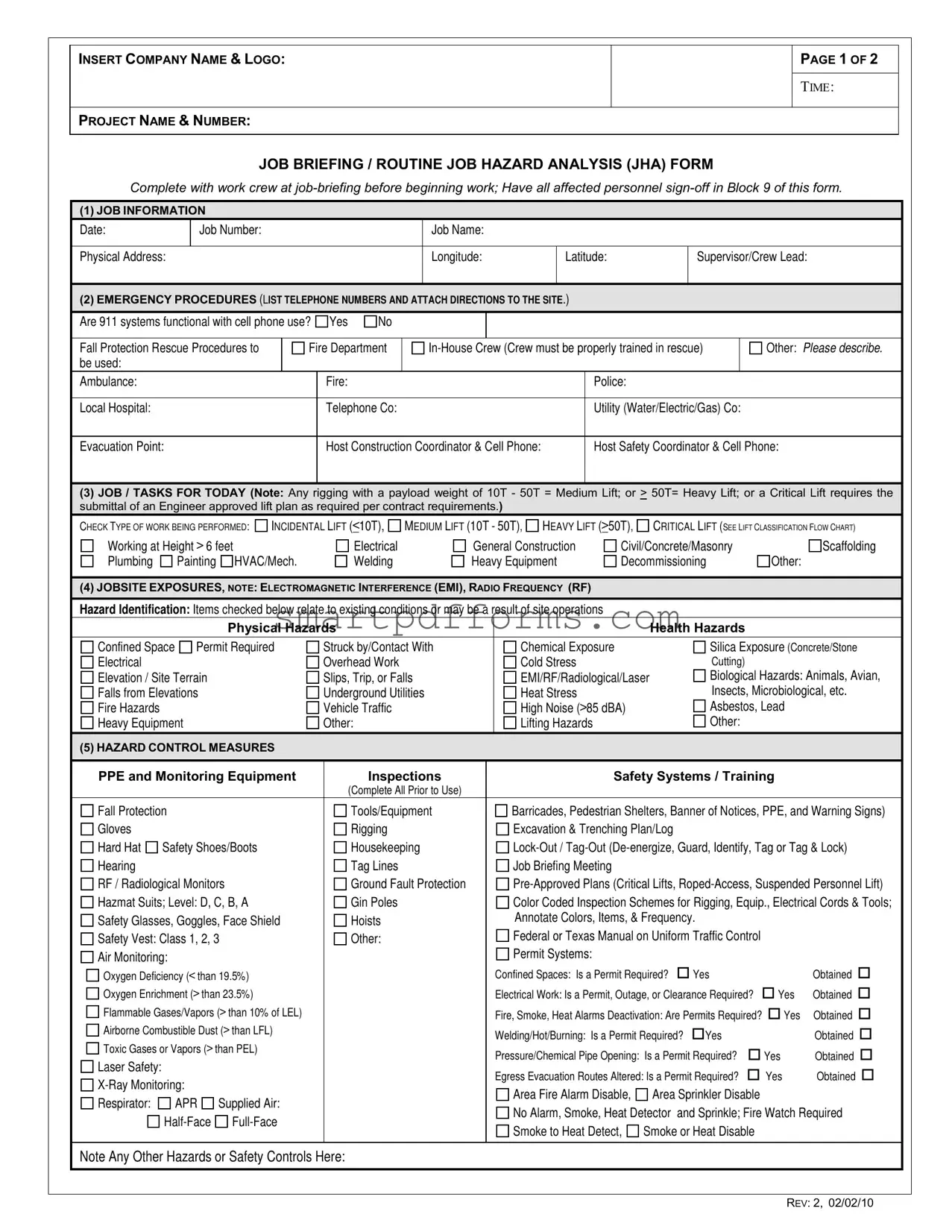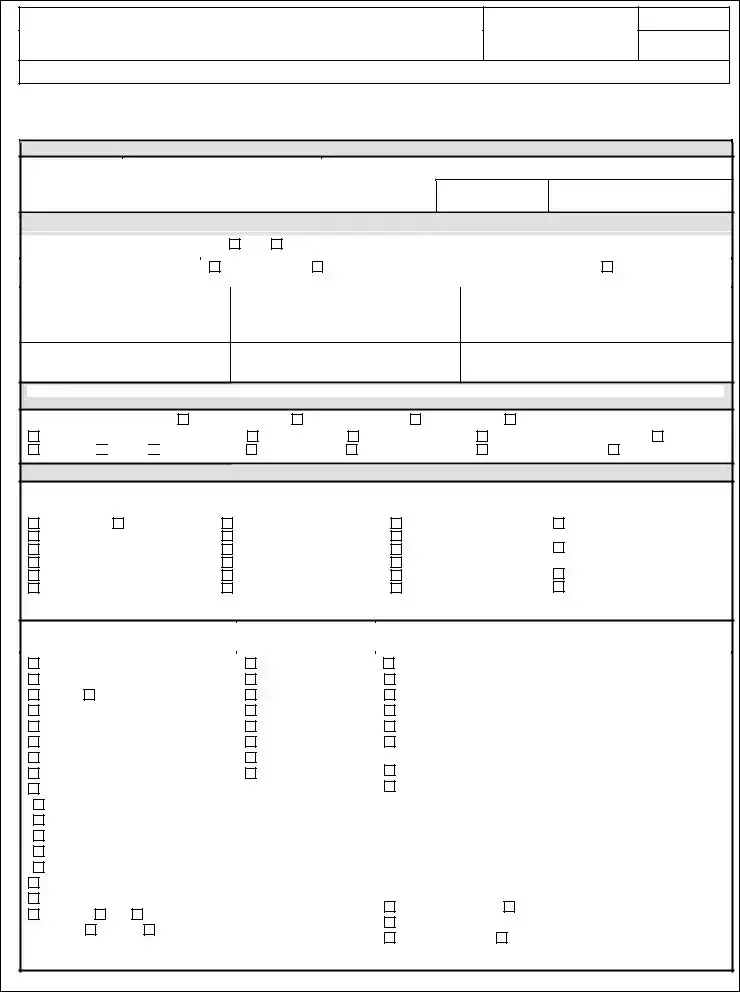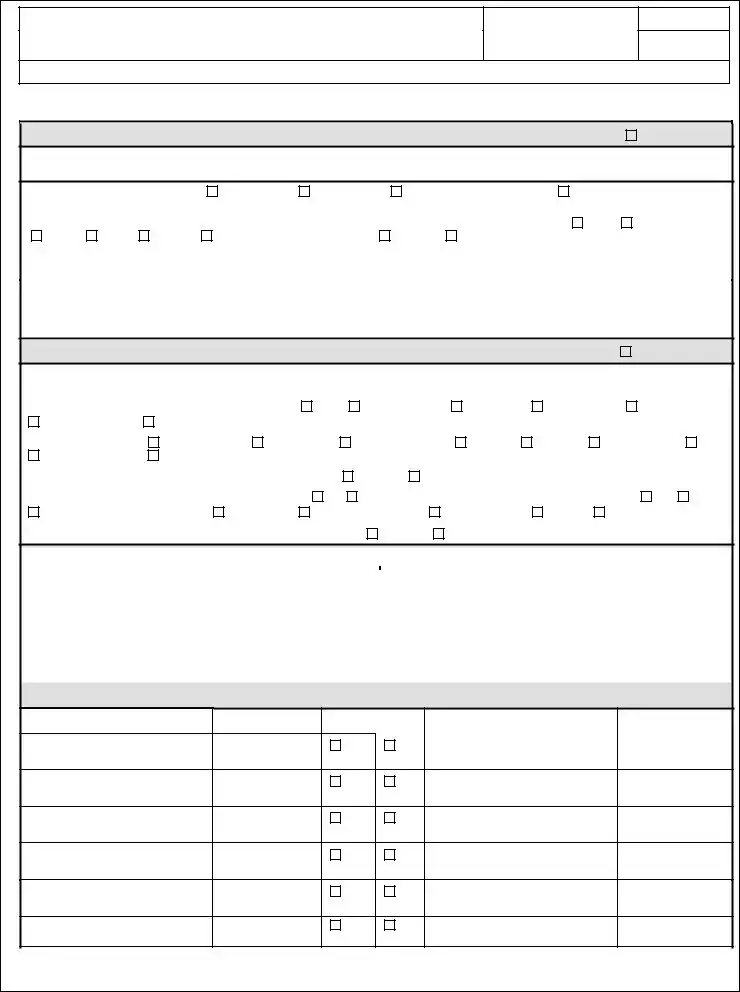Ensuring the safety and preparedness of a work crew before the commencement of any project is not just a matter of compliance, but a critical component of operational excellence. The Job Briefing / Routine Job Hazard Analysis (JHA) form serves as a foundational tool in achieving this goal. This comprehensive document, meticulously designed for teams to fill out, starts with capturing essential job information, including project specifics, job number, and supervisor details. It moves on to detail emergency procedures, clearly listing out contact numbers and directions crucial in emergencies, and verifying the functionality of 911 systems with cell phones. The form then guides the crew through identifying the tasks for the day and classifying their nature and potential hazards - from working at heights to dealing with electrical installations. It doesn't stop there; the JHA form assesses jobsite exposures, categorizing them under physical and health hazards, thereby ensuring that each risk factor is acknowledged and prepared for. Safety measures get a spotlight, with emphasis on Personal Protective Equipment (PPE), safety systems, and equipment inspections. This form even delves into specialized areas such as fall protection, civil work, and handling of suspended personnel platforms, making sure every scenario is accounted for. Finally, it culminates in a section dedicated to reviews and signatures, underscoring the collaborative effort required for a safe and efficient work environment. Through its varied sections, the Job Briefing / Routine Job Hazard Analysis (JHA) form epitomizes a proactive approach to workplace safety, reflecting a commitment to protecting the workforce while promoting a culture of accountability and thoroughness in hazard assessment.



 Painting
Painting 
 HVAC/Mech.
HVAC/Mech.